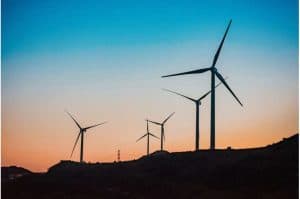
A new study led by The University of South Australia indicates tens of thousands of wind turbine blades will end up in landfill by the end of the decade unless end-of-life programs are established soon.
The study, published in Renewable and Sustainable Energy Reviews and led by Professor Peter Majewski, highlights the challenges of recycling wind turbine blades, which are made of either carbon fiber or glass fiber composite material, both of which are expensive to break down, with the recovered materials having minimal market value.
“The same features that make these blades cost-effective and reliable for use in commercial wind turbines make them very difficult to recycle in a cost-effective fashion,” Prof Majewski says.
“As it is so expensive to recycle them, and the recovered materials are worth so little, it is not realistic to expect a market-based recycling solution to emerge, so policymakers need to step in now and plan what we’re going to do with all these blades that will come offline in the next few years.”
In many parts of the world, wind turbine blades are currently dumped in landfill, but this practice has been banned in some European countries, and with estimates suggesting there will be more than 40 million tons of blade waste worldwide by 2050, alternative solutions are urgently being sought.
Prof Majewski says that, while there is some very limited potential for reuse of blades in niche construction settings and a small market for some of the reclaimed materials, it is likely the costs of disposing of the blades in a sustainable fashion will need to be factored into their production and running costs.
“Our research indicates the most likely viable option is a product stewardship or extended producer responsibility approach, where the cost of recycling the blades is factored into either the cost of their manufacture or the cost of their operation.
“So, drawing on the experience of similar programs for other products, either the manufacturer must take responsibility for what needs to be done with the blades at the end of their useful life, or the wind farm operators must provide end-of-life solutions as part of the planning approval process for their business operations.”
While self-regulation may offer one solution, Prof Majewski believes the long lifespan and high cost of blades means official frameworks are required to ensure transition of responsibility where necessary.
“If manufacturers disappear, or wind farms go broke, we need to ensure processes are still in place for the turbine blades to be disposed of properly,” he says.
Prof Majewski says it is likely consumers will ultimately bear some of the end-of-life cost through energy tariffs, but he believes market competition between energy producers should help to minimize the impact of that on the public.
“There will be some cost to this for everyone involved, but we have to accept that as part of the cost of producing energy in this way,” Prof Majewski says. “Without such solutions, energy options like wind and solar may prove to be no more sustainable than the old technologies they are aiming to replace.”
